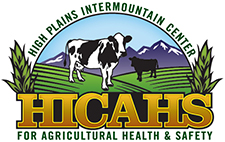 With dairy farm safety, there is always room for improvement.
With dairy farm safety, there is always room for improvement.Researchers and extension specialists in Texas, New Mexico and at the High Plains Intermountain Center for Agricultural Health and Safety (HICAHS) in Colorado are in the earliest stage of developing what they hope will eventually become a free training program for dairy middle managers that focuses on leadership, team-building, and training employees to identify safety hazards on their farms.
But to get started they need basic information about the "safety culture" that currently exists on dairies. They specifically need information about things like how frequently dairies do safety training, what their safety issues and practices are, whether safety is considered when making equipment purchasing decisions, how frequently they follow-up on identified safety problems, and what safety topics they consider most important at their farms.
To share this information, a website has been set up for dairy owners and managers to take a confidential survey at: https://sphuth.az1.qualtrics.com/SE/?SID=SV_2uESRgaTwjh9lVX
The survey takes about 10 minutes and can be done through a smart phone or any mobile device. It can be completed anonymously, or contact information can be provided to learn more about the project. For questions, contact Dr. David Douphrate at the Texas School of Public Health at david.i.douphrate@uth.tmc.edu or by calling 210-276-9005.
The information will be used to design the leadership and safety training program, although it is likely several years away. It is anticipated that through such a program the number of accidents on dairies will decrease, leading to increased employee morale, a healthier workforce, improved insurance policy experience modifiers, and maybe even reduced workers compensation rates.
There are many programs aimed at dairy owners, but not as many for herdsmen and other middle managers who have day-to-day contact with employees. It is anticipated that the training program will be available through mobile devices and have monthly lessons and action items.
 The author has served large Western dairy readers for the past 37 years and manages Hoard's WEST, a publication written specifically for Western herds. He is a graduate of Cal Poly-San Luis Obispo, majored in journalism and is known as a Western dairying specialist.
The author has served large Western dairy readers for the past 37 years and manages Hoard's WEST, a publication written specifically for Western herds. He is a graduate of Cal Poly-San Luis Obispo, majored in journalism and is known as a Western dairying specialist.








